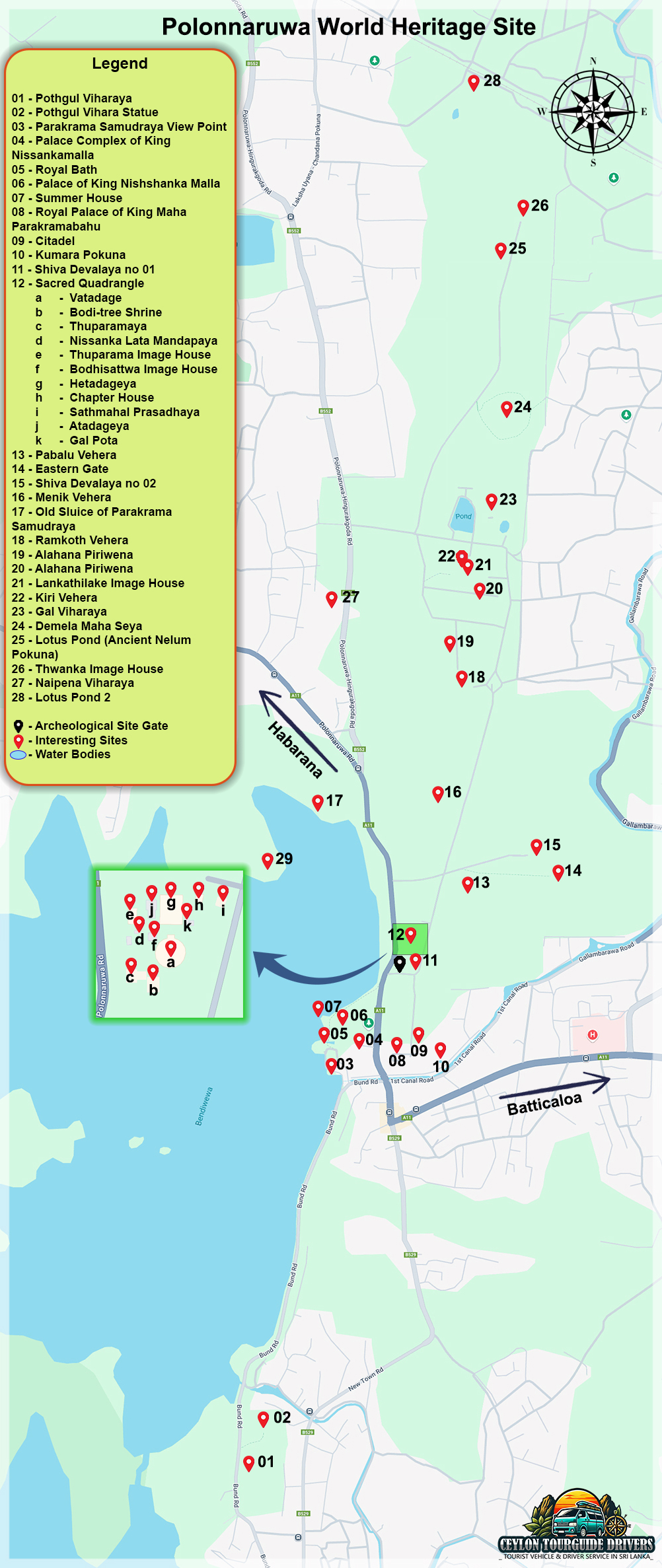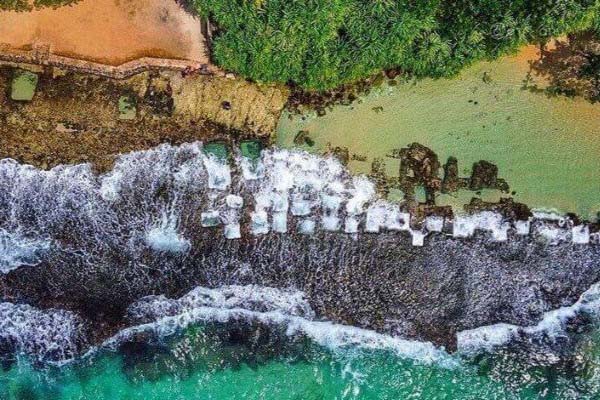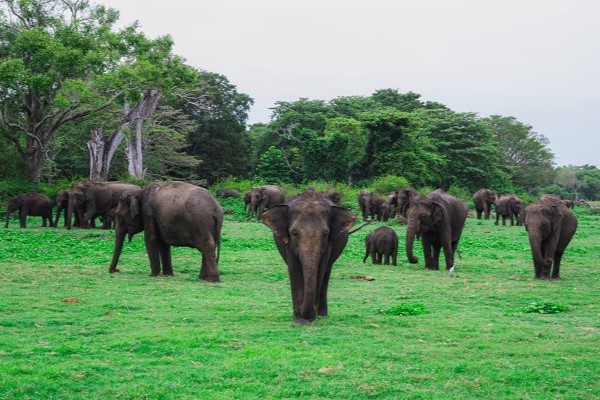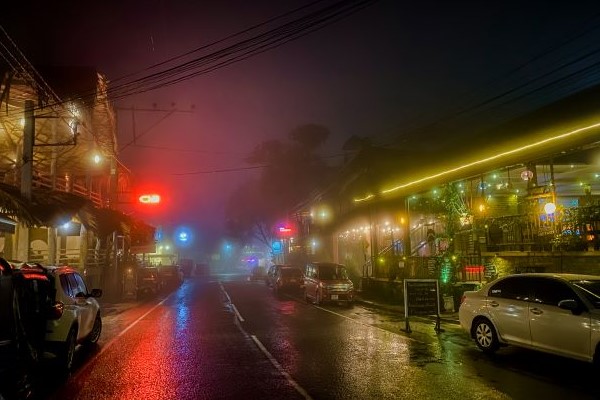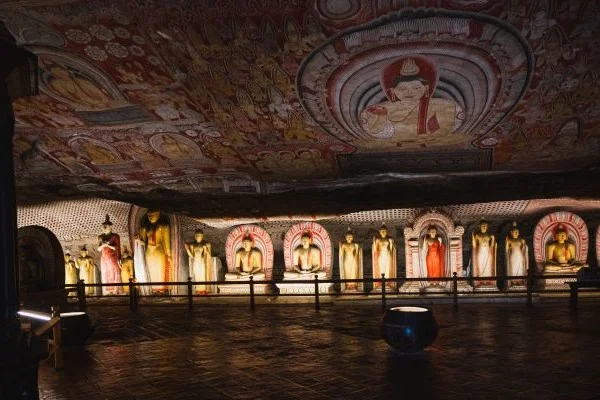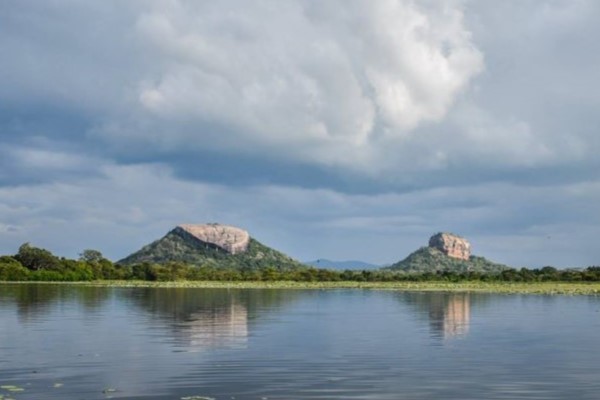Discover the Ancient Wonders of Polonnaruwa: A World Heritage Site in Sri Lanka
Polonnaruwa, a UNESCO World Heritage Site, stands as one of Sri Lanka's most important historical and cultural treasures. This ancient city, which dates back to the 11th century, is a captivating blend of archaeological ruins, majestic temples, and royal palaces, showcasing the rich history and grandeur of the Sri Lankan Kingdom. Located in the North Central Province, Polonnaruwa offers a fascinating glimpse into the island's past and remains a must-visit destination for history buffs, culture enthusiasts, and travelers seeking to explore the depth of Sri Lanka's ancient civilization.
A Deep Dive into Polonnaruwa’s Rich History:
Polonnaruwa’s historical significance begins with the downfall of Anuradhapura, which had been the island's capital for over 1,300 years. In the early 11th century, during the reign of King Vijayabahu I, the Chola Empire invaded Sri Lanka and captured Anuradhapura. After the Chola occupation, Vijayabahu I defeated the invaders and established Polonnaruwa as the capital of Sri Lanka in 1070 AD.
This marked the beginning of a new era for Sri Lanka, as Polonnaruwa became the heart of the island's political, economic, and cultural life. The city flourished under King Vijayabahu and reached its peak under King Parakramabahu I, who ruled from 1153 to 1186 AD. His reign is often referred to as the golden age of Polonnaruwa.
King Parakramabahu I is remembered for his visionary leadership and monumental projects. During his reign, Polonnaruwa experienced tremendous prosperity. One of his most remarkable achievements was the construction of the Parakrama Samudra, a vast irrigation system that included an artificial reservoir, which is still in use today.
The king’s reign saw a period of religious devotion, with the construction of several important Buddhist temples, including the Gal Vihara rock temple, and the Vatadage, a circular relic house. Polonnaruwa became an important center of Buddhist learning, with scholars and monks from all over Asia visiting the city.
Additionally, Parakramabahu’s policies promoted agricultural and trade advancements, boosting both the local economy and Sri Lanka’s standing as a prosperous island nation in the Indian Ocean.
After Parakramabahu I’s death, Polonnaruwa experienced a gradual decline, facing internal conflicts and external invasions, particularly from the south Indian kingdoms. By the 13th century, Polonnaruwa’s power had waned, and the capital was eventually abandoned in favor of Kandy, located in the central highlands.
Despite its decline, Polonnaruwa continued to be an important religious site, especially for Buddhism. It remained under the control of various dynasties and, over time, was rediscovered and preserved as a heritage site for future generations.
Present-Day Polonnaruwa
Today, Polonnaruwa is one of Sri Lanka’s most important archaeological sites and a UNESCO World Heritage Site. It remains a symbol of Sri Lanka’s ancient civilization and continues to attract thousands of visitors each year. The city’s ruins are a testament to the grandeur of the ancient Sinhalese kings and their contributions to Sri Lanka’s cultural and architectural legacy.
Polonnaruwa is also a thriving town, with its local population engaged in agriculture, tourism, and crafts. While much of the area around the ancient city is still rural, the town of Polonnaruwa has developed into a popular tourist hub with hotels, restaurants, and souvenir shops catering to visitors. It provides a blend of ancient history with a modern-day lifestyle, where history buffs and nature lovers can experience both the past and the present in harmony.
The historic city of Polonnaruwa has been carefully preserved, and its monuments, temples, and gardens attract tourists from around the world. The ruins are spread across a vast area, and it’s common for visitors to spend an entire day exploring the wonders of the ancient city.
Tourism in Polonnaruwa also contributes significantly to the local economy. The government has invested in preserving the site and improving infrastructure to enhance the tourist experience. For instance, a well-maintained visitor center, guided tours, and information boards in various languages are available to make the experience more enriching.
Polonnaruwa’s vibrant cultural scene also continues with local festivals, religious events, and the preservation of traditional crafts. The city's proximity to nature reserves, wildlife parks, and the Parakrama Samudra lake adds to its appeal as an eco-tourism destination, blending both history and nature into one stunning experience.
Ecological Importance
In addition to its historical importance, Polonnaruwa is located in a region known for its rich biodiversity. The Minneriya National Park, Kaudulla National Park and Hurulu Eco Park located nearby, are famous for their elephant populations and are popular safari destination. The area surrounding Polonnaruwa, including the Parakrama Samudra reservoir, Minneriya reservoir and Girithale reservoir also play crucial roles in the island's water management and irrigation systems.
The polonnaruwa ecological landscape is home to various species of birds, reptiles, and mammals, making it an ideal spot for nature lovers, birdwatchers, and photographers. The preservation of Polonnaruwa’s natural and cultural heritage is a critical aspect of Sri Lanka’s sustainable tourism strategy.
Preserving Polonnaruwa for Future Generations
Efforts to preserve and protect Polonnaruwa’s ancient ruins are ongoing. UNESCO and the Sri Lankan government work together to maintain the integrity of the site while also promoting responsible tourism. Measures to prevent erosion, vandalism, and environmental degradation are in place to ensure that the ancient city remains intact for future generations to experience.
Archaeologists continue to uncover new aspects of the city’s past, shedding light on the ancient civilization’s life and customs. The latest archaeological findings only add to Polonnaruwa’s mystery, and as such, the site remains a place of active discovery.
Key Attractions at the Polonnaruwa World Heritage Site
-
Gal Vihara
- The most iconic site in Polonnaruwa, Gal Vihara is a rock temple that features four massive statues of Lord Buddha carved into the face of a large granite rock. The statues are known for their serene expressions, intricate detailing, and impressive size, representing the different stages of the Buddha’s life. The standing, reclining, and seated Buddha statues are a testament to the skill and artistry of ancient Sri Lankan sculptors.
-
The Royal Palace and Audience Hall
- The ruins of the Royal Palace, once a grand residence, give visitors a sense of the royal lifestyle in ancient Sri Lanka. The Audience Hall, known for its ornate stone carvings and intricately designed columns, was the center of political activity during the height of the Polonnaruwa Kingdom. Today, you can explore the remnants of these magnificent structures and imagine the bustling royal court that once inhabited them.
-
The Quadrangle
- The Quadrangle is a compact area housing some of the most important religious and royal structures in Polonnaruwa. Among the attractions are the Vatadage (a circular relic house), the Parakramabahu statue, and the beautiful image house, all surrounded by well-preserved stone walls. The intricate carvings and ancient inscriptions found here provide insights into the spiritual and architectural life of the time.
-
The Parakrama Samudra
- This massive artificial reservoir, also known as "Parakrama's Sea," was created by King Parakramabahu I. It is a testament to the king’s mastery of hydraulic engineering and has remained an essential part of Sri Lanka's irrigation system for centuries. The reservoir’s grandeur, combined with scenic views, makes it a stunning site to visit.
-
Shiva Temple and Lankatilaka Vihara
- Polonnaruwa is also home to several significant Hindu temples, such as the Shiva Temple. The Lankatilaka Vihara is another important Buddhist structure that boasts high walls and a large image of the Buddha. Its architecture is notable for its skillful fusion of Buddhist and Hindu architectural styles, reflecting the cultural and religious exchanges that took place during the kingdom's reign.
Best Time to Visit Polonnaruwa
The best time to visit Polonnaruwa is during the dry season from May to October when the weather is more pleasant for outdoor exploration. However, the site is open year-round, and each season offers its unique charm.
How to Get to Polonnaruwa
Polonnaruwa is located about 216 km northeast of Colombo and can be reached by car or bus from the capital. The journey takes about 5-6 hours.
The nearest train station to Polonnaruwa is in Polonnaruwa. From there, you can easily take a taxi or tuk-tuk to the historical site.
Conclusion
Polonnaruwa is a mesmerizing journey back in time, where the story of Sri Lanka's rich cultural history comes to life. From its rise as a capital under the rule of King Vijayabahu I to its golden age under King Parakramabahu I, the city’s history is woven with triumphs and challenges that shaped Sri Lanka’s heritage. Today, it is a beacon of the past, attracting visitors who come to admire its ancient temples, architectural feats, and serene landscapes.
Whether you’re exploring the impressive ruins of the royal palace, marveling at the massive Buddha statues of Gal Vihara, or simply soaking in the tranquil beauty of the Parakrama Samudra, Polonnaruwa offers a unique and unforgettable experience. It stands as a testament to the brilliance of Sri Lanka’s ancient civilization, making it a must-visit destination for history enthusiasts, nature lovers, and travelers alike.
Plan your journey to Polonnaruwa today and immerse yourself in the legacy of a kingdom that has withstood the test of time.
